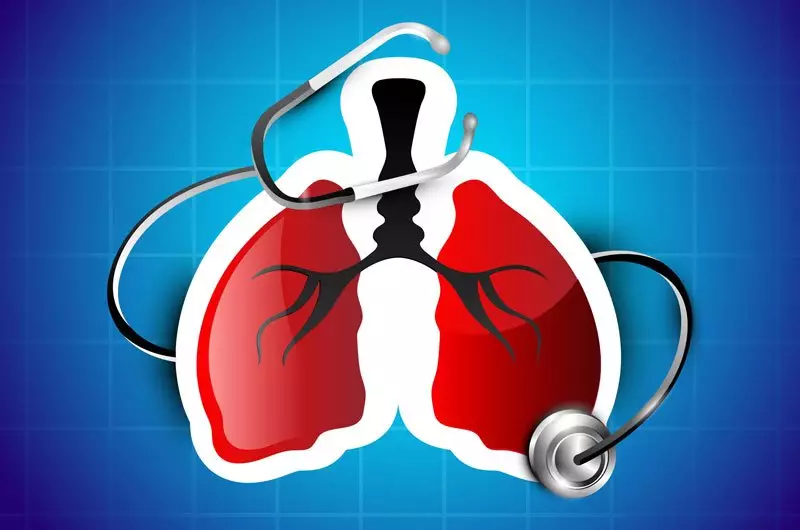What is asthma?
Asthma is a disease that effects the lungs. It makes it difficult to breathe and can make some physical activities difficult or impossible. About 25 million Americans have asthma, according to the Centers for Disease Control and Prevention (CDC). This is the most common chronic condition in American children. Every 1 in 12 children has asthma. To understand asthma, it is important to understand a little bit about what happens when you breathe. Normally, with each of your breaths, air travels through your nose or mouth, down your throat, and into your airways, and eventually to your lungs.
There are many small air passages in your lungs that help carry oxygen from the air to your bloodstream. The mucus then fills the airways, further reducing the amount of air passing through them. These conditions can then lead to an “asthma attack”, which is a cough and tightness in the chest that is typical of asthma.
Asthma symptoms, treatment, and prevention:
The most common symptom of asthma is wheezing. It is a screaming or whistling sound that occurs when you breath. Other asthma symptoms may include Cough, especially at night, when laughing, or during exercise, Chest tightness, Shortness of breath, Difficulty speaking, Anxiety or nervousness, Fatigue, Chest pain, Fast breathing, Recurrent infections and Difficulty sleeping.
Your type of asthma can determine what symptoms you have. Some people experience persistent symptoms throughout the day. If you think the symptoms you are experiencing may be a sign of an asthma-like condition, see your doctor. Also, keep in mind that even if your asthma is well managed, you may still experience occasional flare-ups. Inflammation is often better than the use of rapid therapies, such as inhalers, but in severe cases medical assistance may be required.
Symptoms of an asthma outbreak may include Cough, Grunting, Throat cleansing, Difficulty sleeping, Chest pain or tightness and Fatigue. If your symptoms are worse or improved with the usage of an inhaler, then you should seek immediate medical attention. You should also seek treatment if you experience any of the asthma emergency symptoms, including Severe difficulty breathing, gasping for air, Yellow lips or nails, Dizziness, Difficulty walking or talking and Blue lips or nails.
Causes and stimuli:
Although asthma is common, especially in children, most people do not have asthma until they are adults. Instead, researchers believe that this is due to a variety of factors. These factors include,
- Genetics If a parent or sibling has asthma, you are more likely to develop it.
- History of viral infections. People with a history of acute viral infections during childhood, such as respiratory syncytial virus infection (RSV), may be more likely to develop the condition.
- Hypothesis of hygiene
Many factors can also trigger asthma and worsen symptoms. The causes of asthma can vary and some people may be more sensitive to certain stimuli than others. The most common triggers include Health conditions, such as respiratory infections, Exercise, environmentally disturbing, Allergen, Intense emotions, Extreme weather conditions, Insects and Some medications, including aspirin or non-steroidal anti-inflammatory drugs (NSAIDs).
Diagnosis and types:
There is no single test or test to determine if you or your child has asthma. Instead, your doctor will use different criteria to determine if the symptoms are the result of asthma. The following trusted sources may help diagnose asthma,
- Health history If your family members have respiratory problems, your risk is higher. Let your doctor know about this genetic link.
- Breathing test Pulmonary function tests (PFTs) measure the flow of air in and out of your lungs. The most common test, for spirometry, is to blow into an instrument that measures wind speed.
Doctors usually do not perform breathing tests in children under 5 years of age because it is difficult to read correctly. Instead, they may prescribe asthma medication to your child and wait to see if the symptoms improve. If they do, your child is more likely to have asthma. For adults, if the test results indicate asthma, your doctor may prescribe a bronchodilator or other asthma medication. If the use of this medicine improves the symptoms, your doctor will continue to treat your condition as asthma. Your doctor will also need to determine if you have asthma. The most common type is allergic asthma, which is the trusted source of 60% of all asthma cases. Additional types of asthma are related to a person’s life stage. Although asthma can appear at any age, pediatric asthma affects children in particular and asthma that begins in adults does not appear until puberty.
What is an asthma attack?
When your asthma symptoms gradually get worse, it’s called an exacerbation, or an asthma attack. Breathing becomes difficult because the airways become swollen and the bronchial tubes become narrow. Symptoms of growth may include Hyper ventilation, Cough, Grunting, Shortness of breath, Increased heart rate, Movement and Blue lips. Although a problem can go away quickly without medication, you should consult your doctor as it can be fatal. The longer the stress lasts, the more it can affect your ability to breathe. This is why stress often requires going to the emergency room. Stress can be prevented by taking medications that help manage your asthma symptoms.
When to see a doctor:
At present, there is no cure for asthma. However, there are many effective treatments that can reduce the symptoms of asthma. You can contact a doctor in your area using the Health Line Find Care tool. Once you have been diagnosed with asthma, you should see your doctor at least once a year or more frequently if you have persistent symptoms after using the treatment.
Call your doctor right away if you Feeling weak, cannot perform daily activities and there is wheezing or coughing that will not go away. It is important to be aware of your condition and its symptoms. The more you know, the more active you can be in improving your lung function and how you feel. Talk to your doctor about this:
- About your asthma
- Which triggers your symptoms.
- Which daily treatments are best for you?
- Your treatment plan for asthma attacks.
Summary:
Asthma is a condition that causes swelling of the lungs and makes it difficult to breathe and you know now about asthma symptoms, treatment, and prevention. It can affect both adults and children in different forms and at different levels of severity. To make you healthy from this asthma kindly visit the affordable assignment written by an online writer to write my paper regarding asthma topics. There are various medications available to treat asthma. The most common treatments are bronchodilators, which can be short-term to treat asthma attacks or long-term to manage symptoms over time. Lifestyle changes can also help reduce the risk of developing asthma. This may include dietary changes, exercise, or stress management. Talk to your doctor about the type of asthma you have and the best treatment and management options for you.







